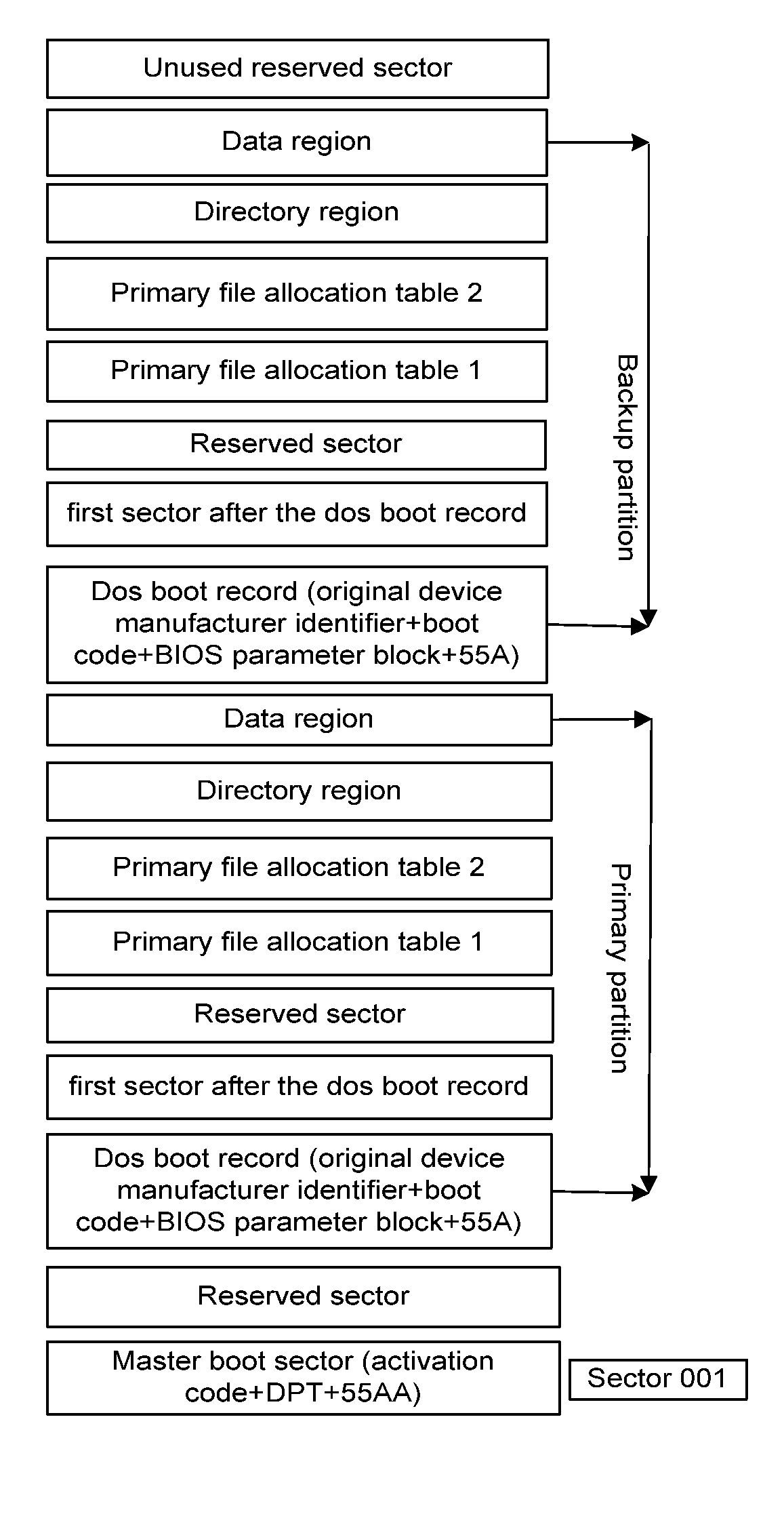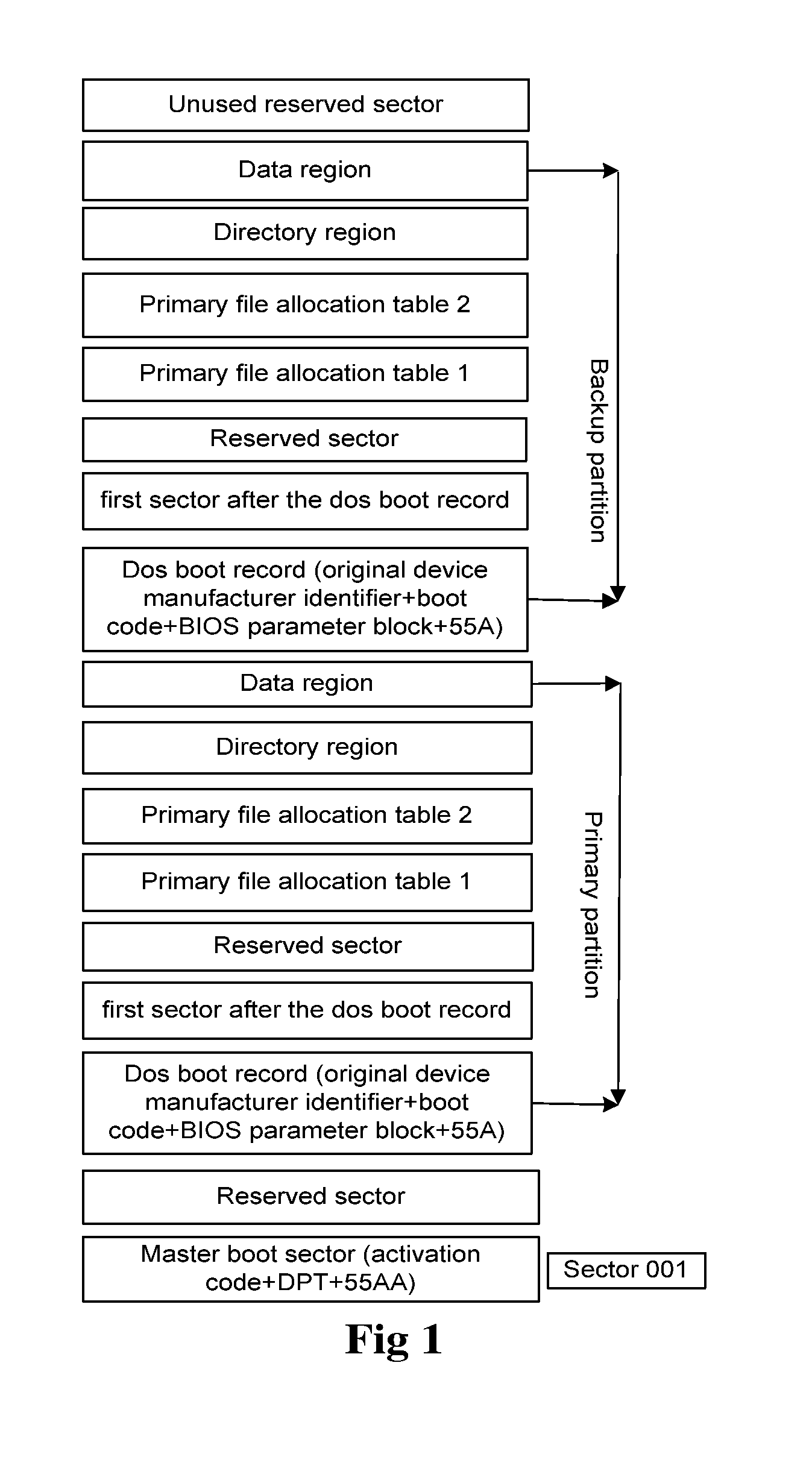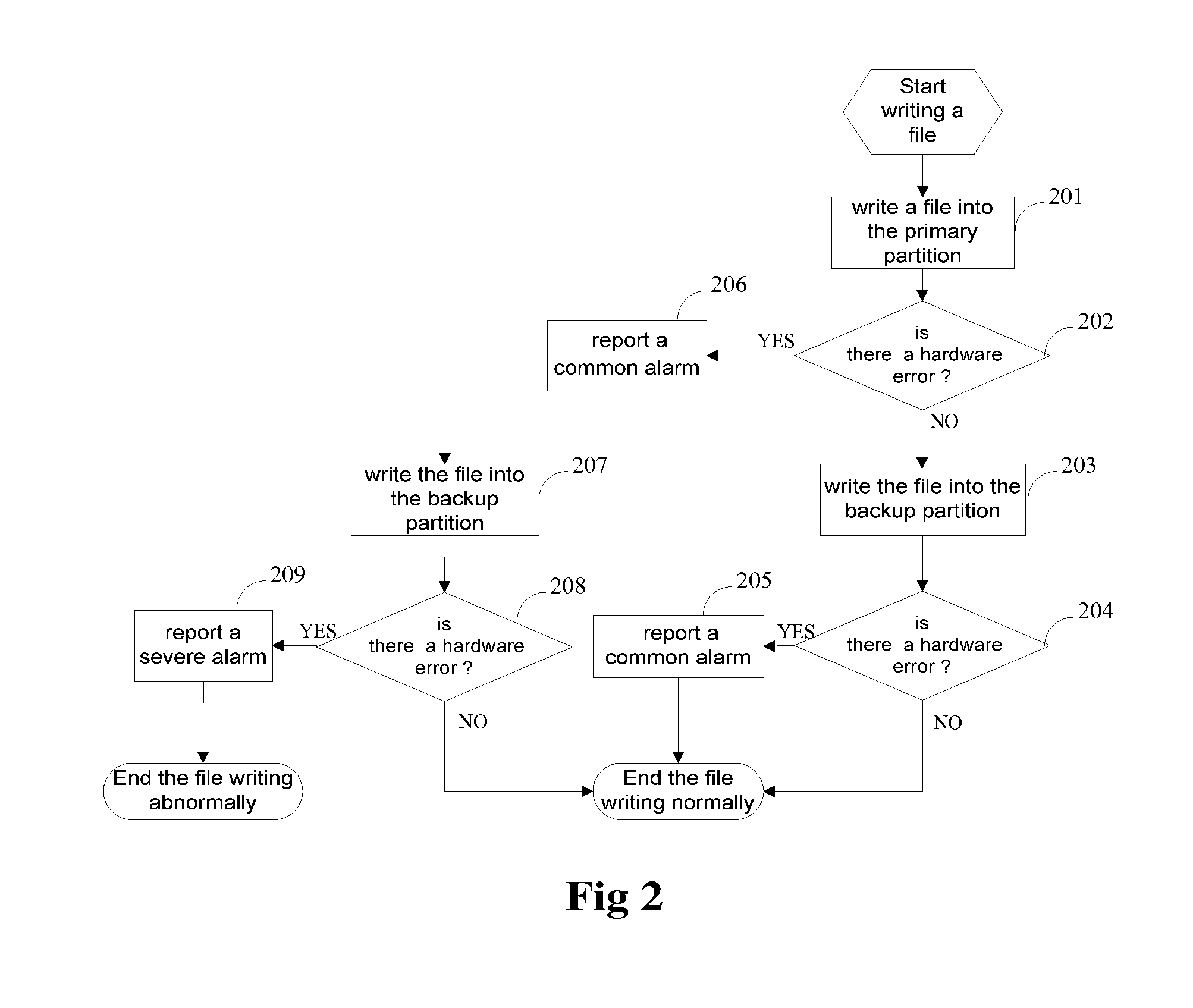Method and device for reading and writing a memory card
a memory card and memory card technology, applied in the field of embedded systems, can solve the problems of single board running abnormally, limited read/write time of nand flash, service life, etc., and achieve the effect of improving the error tolerance of the memory card and the stability of the system
- Summary
- Abstract
- Description
- Claims
- Application Information
AI Technical Summary
Benefits of technology
Problems solved by technology
Method used
Image
Examples
embodiment 1
[0028]An embedded single board in a communication device comprises the memory card shown in FIG. 1. As shown in FIG. 2, writing a file into the memory card comprises the following steps.
[0029]Step 201: write a file into the primary partition.
[0030]In the writing flow, a read / write device writes the file into the primary partition first.
[0031]Step 202: determine whether there is a hardware error in the primary partition. If so, execute Step 206, otherwise, write the file into the primary partition normally, and then execute Step 203.
[0032]During the writing of the file into the primary partition, if the file cannot be normally written into the primary partition due to a hardware error that occurs in the primary partition, then execute Step 206; If no hardware error occurs in the primary partition, write the file into the primary partition normally and then execute Step 203. A hardware error may occur in the following cases: a communication device is suddenly reset or powered off, or ...
embodiment 2
[0044]The embedded single board in a communication device comprises the memory card shown in FIG. 1. As shown in FIG. 3, reading a file from the memory card comprises the following steps (in these steps, an error occurring in the reading of the file from the memory card is a hardware error).
[0045]Step 301: read a file from the backup partition.
[0046]In the reading flow, a read / write device reads the file from the backup partition first.
[0047]Step 302: determine whether there is a hardware error in the backup partition. If so, that is, the file cannot be read from the backup partition normally, execute Step 303; otherwise, read the file from the backup partition normally, and then end the file reading flow normally.
[0048]Step 303: report a common alarm to a network manager to remind a maintainer of the damage of the backup partition of the memory card and the necessity of a recent memory card replacement.
[0049]Step 304: read the file from the primary partition and then proceed to Ste...
embodiment 3
[0055]As a hardware error has a higher priority than a software error during a file reading process, this embodiment is a sub-flow of embodiment 2, in which it is assumed that no hardware error occurs during a file reading process. As shown in FIG. 4, the reading of a file from the memory card shown in FIG. 1 comprises the following steps.
[0056]Step 401: read a file from the backup partition.
[0057]In the reading flow, a read / write device reads the file from the backup partition first.
[0058]Step 402: determine whether there is a software error occurring during the reading process. If so, that is, the file cannot be read from the backup partition normally, execute Step 403; otherwise, read the file from the backup partition normally, and then end the file reading flow normally.
[0059]It is possible that no file is read from the backup partition or the key field of the file read is checked wrong, that is, a software error occurs and the file cannot be read from the backup partition, the...
PUM
 Login to View More
Login to View More Abstract
Description
Claims
Application Information
 Login to View More
Login to View More - R&D
- Intellectual Property
- Life Sciences
- Materials
- Tech Scout
- Unparalleled Data Quality
- Higher Quality Content
- 60% Fewer Hallucinations
Browse by: Latest US Patents, China's latest patents, Technical Efficacy Thesaurus, Application Domain, Technology Topic, Popular Technical Reports.
© 2025 PatSnap. All rights reserved.Legal|Privacy policy|Modern Slavery Act Transparency Statement|Sitemap|About US| Contact US: help@patsnap.com



